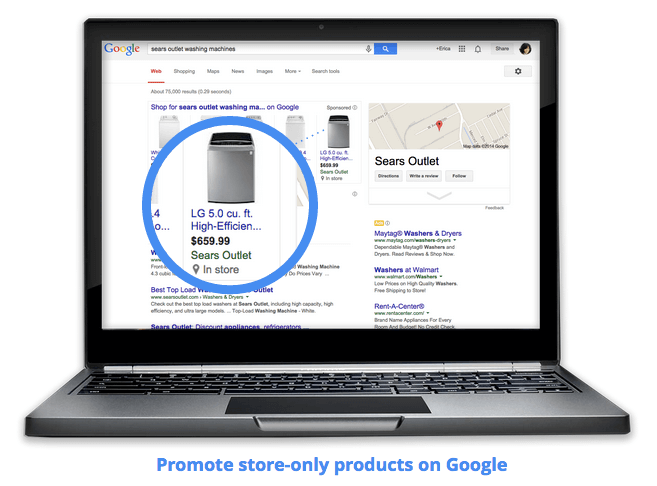Official: Google Expands Local Inventory And Store-Only PLAs Beyond The U.S.
Last fall, Google introduced local product listing ads, which it is now calling “local inventory ads”, in the U.S. This week Google officially announced support for local inventory ads in the UK, France, Germany, Japan and Australia. These are product listing ads (PLAs) from nearby retailers shown with a local pin icon. After clicking on […]
Last fall, Google introduced local product listing ads, which it is now calling “local inventory ads”, in the U.S. This week Google officially announced support for local inventory ads in the UK, France, Germany, Japan and Australia.
These are product listing ads (PLAs) from nearby retailers shown with a local pin icon. After clicking on a local inventory ad, users are taken to a “local storefront” landing page. The local storefront includes in-store availability, product detail as well as related items available at the retailer.
Local inventory ads are powered by a separate local product feed that merchants upload to Google Merchant Center. Advertisers only pay for the click on the ad itself, actions such as calls made from the local storefront are free of charge.
The desktop version, called store-only ads, rolled out quietly this summer. Store-only ads allow local retailers to promote products that aren’t available online. The desktop ads are appended with a map pin and “In store” annotation.

“can prioritize showing local products to get shoppers in your doors during the weeks and days leading up to the holidays. As items go out of stock online and last-minute shipping costs increase, retailers who can provide cost-effective, quick in-store purchase options stand out in the crowd.”
Retailers interested in participating in local inventory and in-store ads should fill out the interest form.
The expansion of local inventory ads to desktop and into five more countries suggests the program is proving successful — despite the barrier of retailers having to share inventory data with Google. The move to capture more online-to-offline behavior (and ad sales) is reflected in disparate programs of Estimated Total Conversions, aimed at capturing cross-device and eventually in-store conversions related to Google advertising campaigns, and Google Express in which Google partners directly with local retailers to sell and deliver inventory.
That Google is investing in all three of these “local” efforts underscores the opportunity the company sees the value of the brick-and-mortar economy for its own businesses.
Contributing authors are invited to create content for Search Engine Land and are chosen for their expertise and contribution to the search community. Our contributors work under the oversight of the editorial staff and contributions are checked for quality and relevance to our readers. The opinions they express are their own.
Related stories

